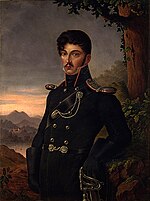Gadebusch | |
|---|---|
 Town hall and church | |
| Coordinates: 53°42′N 11°07′E / 53.700°N 11.117°E | |
| Country | Germany |
| State | Mecklenburg-Vorpommern |
| District | Nordwestmecklenburg |
| Municipal assoc. | Gadebusch |
| Government | |
| • Mayor | Ulrich Howest |
| Area | |
• Total | 47.65 km2 (18.40 sq mi) |
| Elevation | 35 m (115 ft) |
| Population (2023-12-31)[1] | |
• Total | 5,459 |
| • Density | 110/km2 (300/sq mi) |
| Time zone | UTC+01:00 (CET) |
| • Summer (DST) | UTC+02:00 (CEST) |
| Postal codes | 19205 |
| Dialling codes | 03886 |
| Vehicle registration | NWM |
| Website | www.gadebusch.de |
Gadebusch (German pronunciation: [ˈɡaːdəbʊʃ]) is a town in Mecklenburg-Western Pomerania in the district of Nordwestmecklenburg. Halfway between Lübeck, Schwerin and Wismar, it is part of the Hamburg Metropolitan Region.
The town is known for two notable monuments: the Stadtkirche (City Church), built in 1220, considered the oldest brick church in Mecklenburg, and the Schloss (Castle), built in 1580–1583 in Northern Renaissance style.
Near the town is the site of the Battle of Gadebusch in 1712.
Gadebusch municipality
Besides the old town of Gadebusch, the following settlements are incorporated with the Gadebusch municipality:
- Amtsbauhof
- An der Flöte
- Buchholz
- Dorf Ganzow
- Güstow
- Güstow Werder
- Hof Ganzow
- Jarmstorf
- Klein Hundorf
- Möllin
- Neu Bauhof
- Neu Güstow
- Reinhardtsdorf
- Stresdorf
- Wakenstädt
Education
Gymnasium Gadebusch (high school)
Notable people

- Theodor Körner (1791–1813), author and freedom fighter, fallen in a forestry at Rosenow
- Agnes Karll (1868–1927), nursing reformer, is buried in the old Gadebuscher cemetery
- Wolf Biermann (born 1936), German songwriter, from 1953 to 1955 he attended the school with boarding school.
References
- ^ "Bevölkerungsstand der Kreise, Ämter und Gemeinden 2023" (XLS) (in German). Statistisches Amt Mecklenburg-Vorpommern. 2023.
External links
- Official website (in German)













